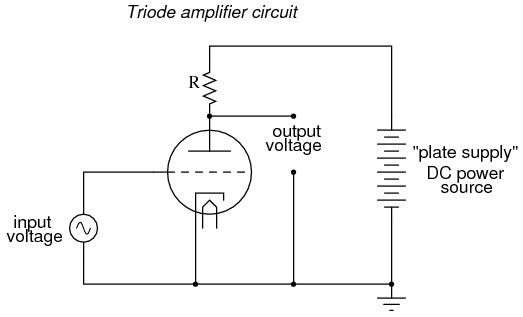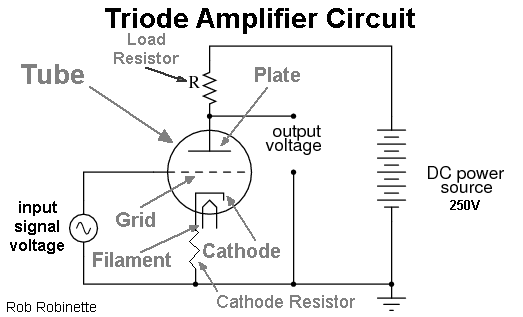Amplifier is a device that increases the strength of an electric signal by the use of power from a source other than the signal.
An amplifier increases the amplitude of an electric wave while preserving the form and length of the wave. Amplifiers are widely used in radio and television broadcasting and receiving.
Mechanism of operation:
The basic electron tube amplifier consists of a triode in a circuit with other components. A triode is an electron tube that contains 3 electrodes : the cathode,the grid,and the anode or plate. In a diode amplifier, the signal to be amplified is fed to the grid of the tube.
In addition,the grid is given a small negative voltage called the grid bias relative to the cathode by means of a battery or other methods.
The total grid voltage that is the sum of the signal voltage and the grid bias controls the number of electrons that flow from the cathode to the plate.
This electron flow determines the current that is set up in the plate current.
A small change in the grid voltage produces a large change in the plate current.


The current in the plate circuit flows through the load resistor R and the output is voltage is developed across this resistor.
The output voltage is equal to the product of the plate current and the value of load resistor.
Thus a small change in input voltage produces a large change in the output voltage.
Gain of the Amplifier
The ratio of the output voltage to the input voltage fed to the grid is called the voltage gain of the amplifier.
No comments:
Post a Comment